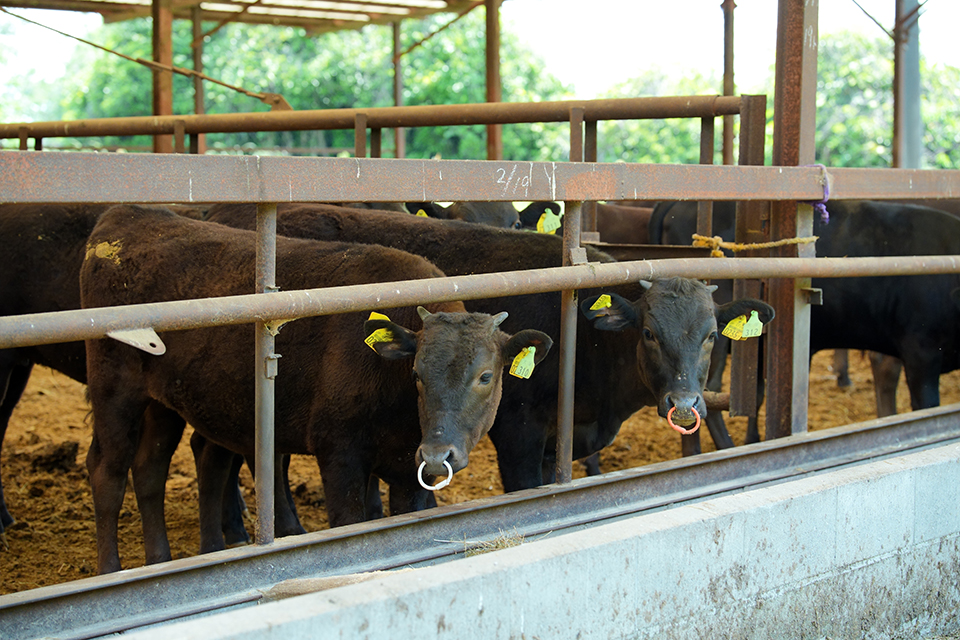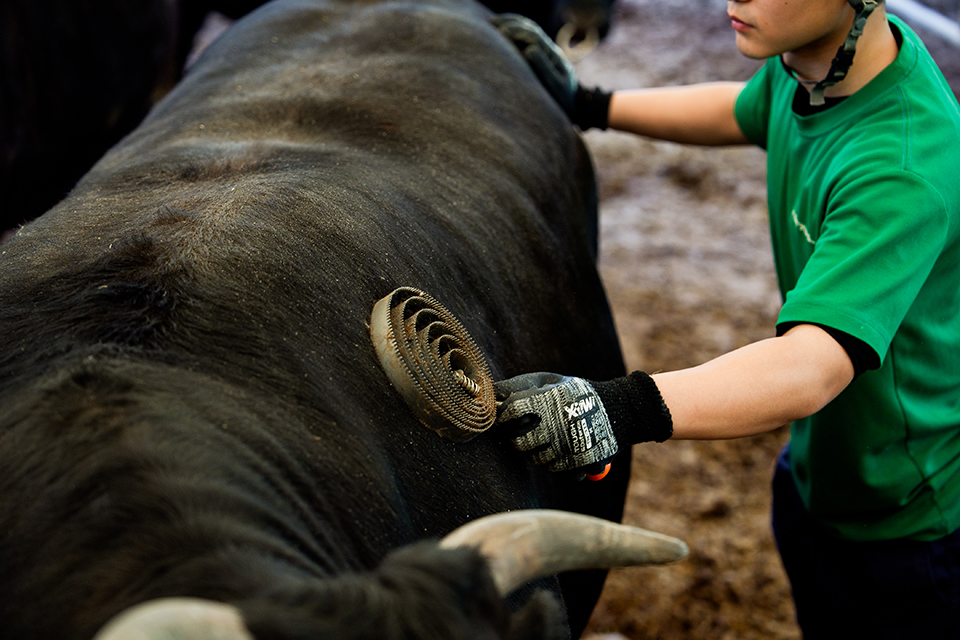Akaushi (Japanese Brown Cattle)
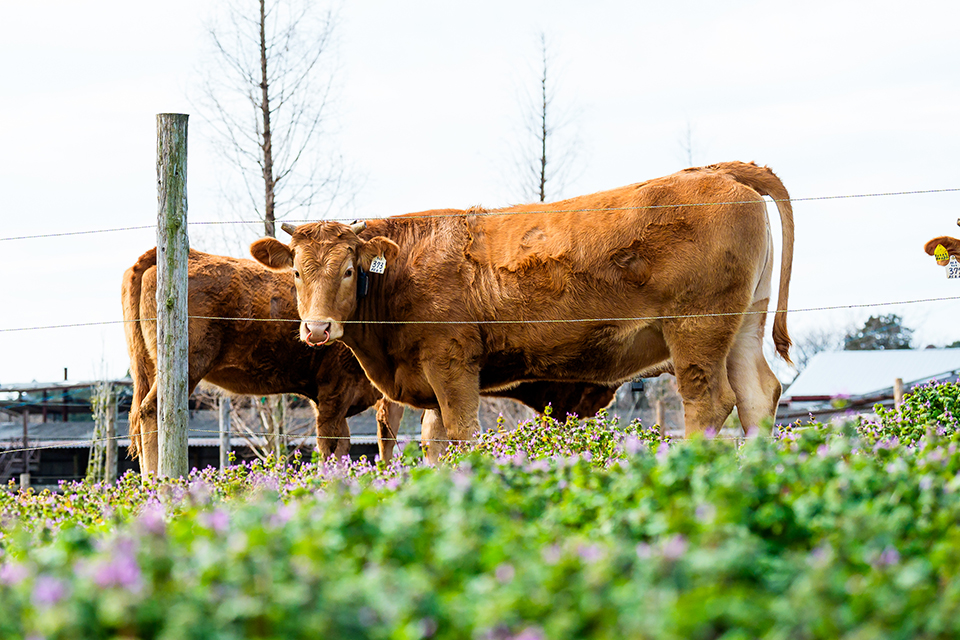

Red-Fleshed Flavor, Raised by the Nature of Kumamoto
Our group proudly raises approximately 1,200 of Akaushi or Japanese brown cattle, a rare and culturally significant Wagyu breed originating from Kumamoto Prefecture.
Formally known as Kumamoto Akage Washu (褐毛和種), Akaushi represents just 1.2% of total Wagyu beef distributed as of 2023 (source: National Cattle Identification Database, Livestock Improvement Association of Japan). This scarcity underscores its value – and the deep responsibility we carry in raising it.
※Reference:「牛個体識別全国データベース」家畜改良センター
A Unique Lineage
The roots of Akaushi trace back to Japan’s native cattle. In the early 1900s, these indigenous cattle were crossbred with the Swiss Simmental to enhance their meat quality—resulting in a new breed with robust musculature, a high ratio of lean meat, and a well balanced fat content. In 1944, during Japan’s nationwide breed standardization efforts, Akaushi was officially recognized as one of the country’s Wagyu breeds under the name Akage Washu or Japanese Brown.
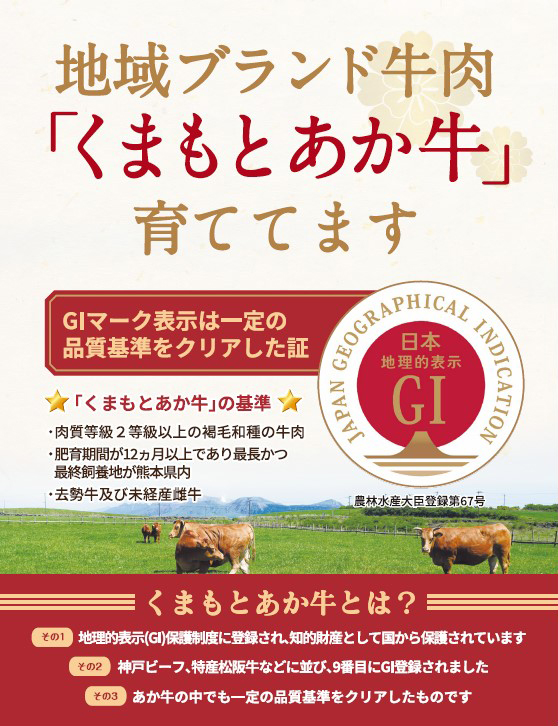
GI-Certified “Kumamoto Akaushi”
Thanks to Kumamoto’s traditional free-range grazing methods and district regional production standards, “Kumamoto Akaushi” received Geographical Indication (GI) protection on September 27, 2018, recognizing it as a product deeply tied to its place of origin.
Akaushi are easily recognized by their reddish-brown coats and more muscular build compared the more widely known Kuroge Washu (Japanese Black cattle). Their meat is distinguished by:
- A higher ratio of lean red meat
- Moderate marbling
- Tender texture and a clean finish
- Rich flavor from naturally occurring umami component like inosine and amino acids
This makes Akaushi an ideal choice for those seeking the true essence of beef – flavorful, balanced and refined.
Standards for Kumamoto Akaushi (GI)
- Beef from Japanese Brown cattle with a meat grade of 2 or higher
- Raised for at least 12 months, with the longest and final fattening period in Kumamoto Prefecture
- Limited to steers and heifers (never-calved cows)
Japanese Black Wagyu
Japan’s Signature Wagyu – Rich, Refined and Revered
At our farm, we raise approximately 1,900 of Japanese Black Cattle, known as Kuroge Washu (黒毛和種) – the most iconic and celebrated breed of Wagyu in Japan. Representing nearly 90% of all Wagyu produced domestically as of 2023 (source: National Cattle Identification Database, Livestock Improvement Association of Japan) – when people speak of “Kuroge” (black wagyu), this is the gold standard they’re referring to.
Why We Raise Kuroge Washu (Japanese Black Cattle)
We believe that exceptional beef begins with intentional choices – from the breed to the land it’s raised on. Kuroge Washu currently reflect the spirit of Japanese heritage and precision. Its fine marbling and delicate sweetness embody the quality the world has come to expect from Wagyu.
At the same time, raising this breed isn’t just about preserving a tradition – it’s about sharing it.
Guided by our philosophy of “Global Vision, Local Action” we raise Kuroge Washu not only to uphold Japan’s legacy of excellence, but to offer a globally resonant expression of what responsible craftsmanship and community-rooted agriculture can be. Every animal is raised with deep respect for nature, people and place.
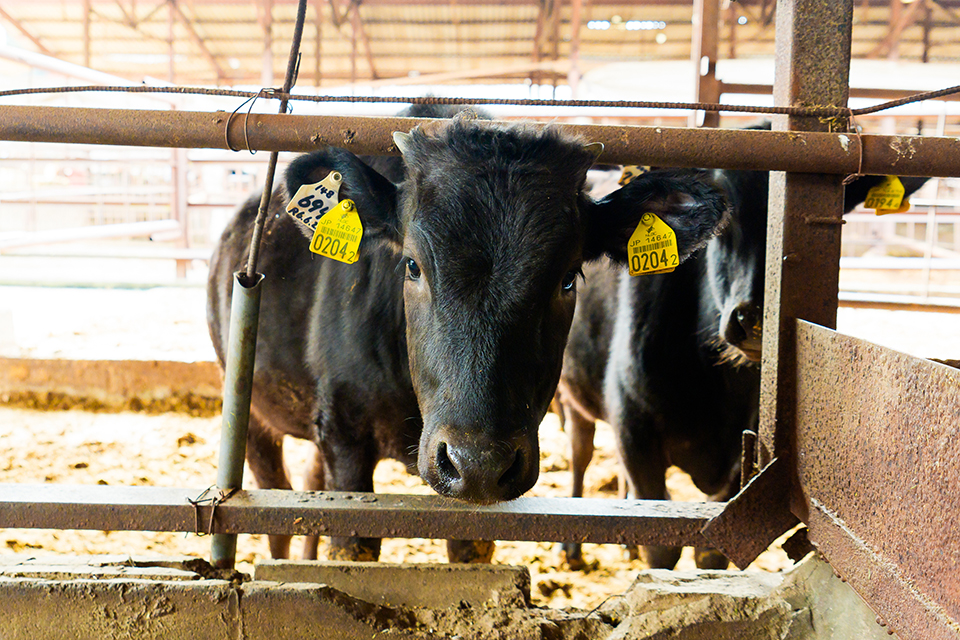

A Breed Born from Craft and History
This breed traces its origins to native Japanese cattle, which were selectively crossbred during the Meiji era (1868–1912) with imported European breeds such as Simmental, Shorthorn, and Brown Swiss.
Careful breeding preserved the unique characteristics of Japanese cattle while enhancing intramuscular fat (marbling), resulting in a signature melt-in-your-mouth texture.
In 1944, the breed was officially designated as Kuroge Washu (Japanese Black), one of Japan’s four recognized Wagyu breeds.
Easily identified by their jet-black coat, dark horns, and powerful frame, Kuroge Washu cattle are as striking in appearance as they are in taste. Mature bulls generally weigh between 800–1,000 kg, while cows weigh 600–700 kg. Their meat is celebrated for:
- Exquisite marbling with fat evenly distributed throughout the muscle
- A melt-in-your-mouth texture that balances richness and delicacy
- A gentle sweetness and umami depth that lingers
- A fine grain and softness that elevates the dining experience
This combination of marbling and finesse results in beef that’s not only indulgent, but elegant – sought after by top chefs and discerning palates around the world.
